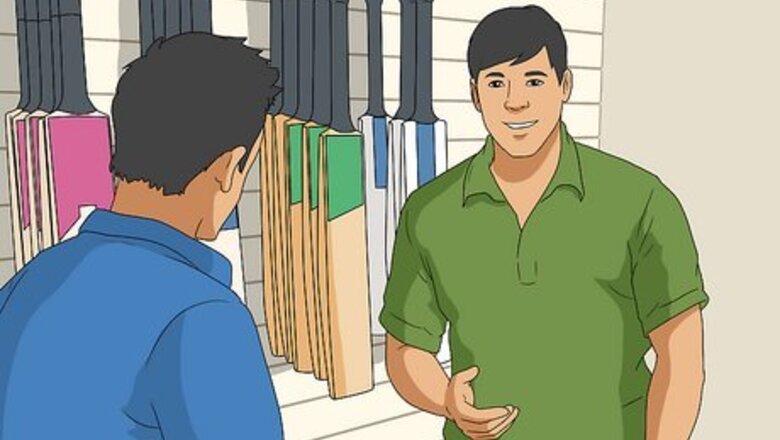
views
Matching Costs with Basic Needs
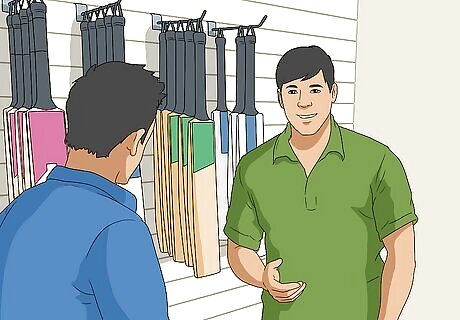
Visit a brick-and-mortar store. You don't necessarily need to make your final purchase from a local store, but seek out expert advice in person when browsing bats. Visit a store that specializes in cricket so you can ask experienced staff about which bat is best for your personal needs. Keep in mind that the best reviewed cricket bats that you find online are still just pictures as far you're concerned. You'll want to physically handle bats beforehand to find one that feels right for you personally. Follow up with some online research after hearing recommendations. Read customer reviews, online ratings, and forum comments on particular brands and products.
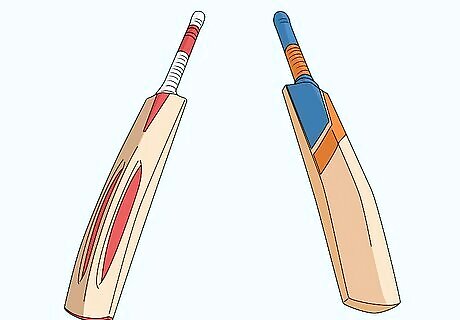
Keep your intended use in mind. Ask yourself what level of play you intend to engage in. If you're looking to take part in some serious competition, prepare to invest in a quality bat that's durable enough to stand up to constant hard-hitting use. However, if you're just looking for some light weekend action in the backyard, don't worry so much about getting a high-end bat. Expect bats to cost anywhere from $20 to hundreds of dollars. Obviously, a $300 bat could be a waste of money if you hardly ever use it, but constantly replacing cheaper bats due to heavy use can be just as wasteful in the long run.

Factor in which type of ball you use. If you're taking part in competition play, you'll likely be using a heavy ball made of leather or polystyrene. For these, plan on getting a higher grade bat since the impact will be harder. But if you're just knocking around a rubber ball or tennis ball, save your money and look for a bat designed for casual use with lighter balls.

Opt for cheaper bats for beginners. If you've never played cricket before, hold off on purchasing a top-of-the-line bat for now, even if you intend on playing full-time. Expect the design of one bat to favor a certain style of play over another. Wait to see what type of player you develop into before investing in expensive equipment. For now, content yourself with something cheaper that will serve for the time being. This is especially true for kids. As they continue to develop physically, they will need new, larger bats to match their size, regardless of how much life is left in their old bat.

Fall back on favored brands when in doubt. If you're totally unsure of what to buy, rely on other people's experience. Check customer reviews and ratings for popular brands. Join online forums to find out people's recommendations for your intended use. Go with trusted brands like: Kookaburra Gray Nicolls Reebok Puma Adidas
Evaluating a Bat's Construction
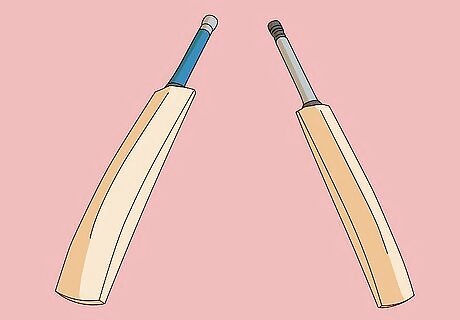
Check which type of wood is used. Expect most if not all bats to be made of wood. However, don't treat all wood as the same. Favor willow over pine unless you're a very casual player, since pine tends to be cheapest because it has less spring when it comes into contact with the ball. With willow bats, choose between: English willow, which is regarded as the best material because it's the most springy. Because of this, it tends to be the most expensive. These bats are ideal for serious competitive players. Kashmir willow, which is less springy than English willow, but more so than pine. It is also highly durable, which makes it a good in-between choice. It is also ideal for beginners and power hitters.
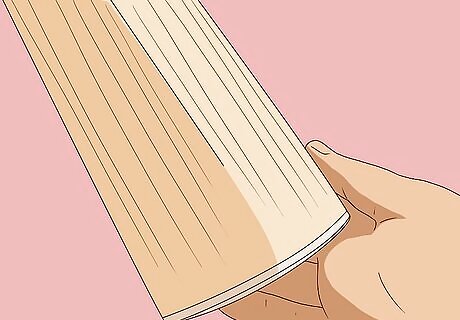
Count the grains. Inspect the face of each blade. Count the number of grain lines you see running from top to bottom. View these as an indicator of the bat's playability and durability. Expect some trade-off between the two, with more grains equalling better performance but less longevity, and vice versa. Favor bats with six to ten grain lines. Additionally: Favor bats with consistent spacing in between each pair of grain lines. Make sure the grain's profile on the back of your bat matches the profile on its face.
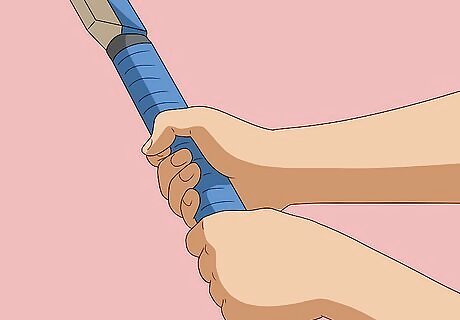
Inspect the handle. First, make sure the handle is centered with the blade. Then hold the bat by its handle. Make sure it's thin enough for you to hold comfortably and securely. Favor bats with rubber grips over the handle for extra control. Additionally, consider handles that have been reinforced with titanium, which adds more power and control. Off-centered handles will make the blade's weight feel awkward and uneven in your grip. Bare handles are more prone to twisting and slipping in your hands, especially when you sweat.
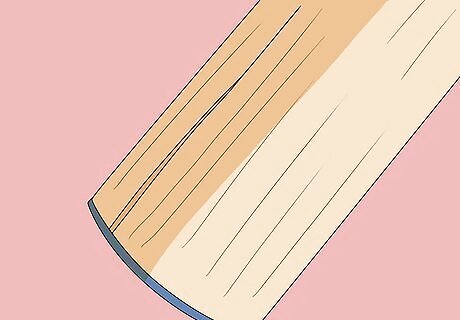
Check for obvious damage or defects. Make sure the bat doesn't show signs of splitting along the grain. Also inspect the face and edges for any nicks, dents, or other surface flaws. Expect these to interfere with the ball's normal action if struck at these points. This should certainly be done before you purchase a bat, as well as before each use.
Finding the Right Bat for You
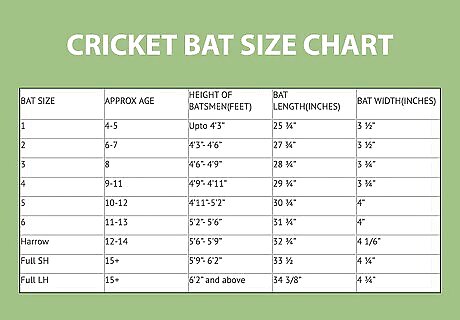
Choose a size recommended for your height. Expect less control over the bat if you go with one that is too long or short for your build. Follow guidelines regarding a bat's appropriate length and width for your height. Do so even if you're a younger player who hasn't finished growing, since picking a bat for your future self will negatively affect your performance in the here and now. Search online for sizing charts, such as this one: http://www.desisport.com/how-to-choose-your-cricket-bat
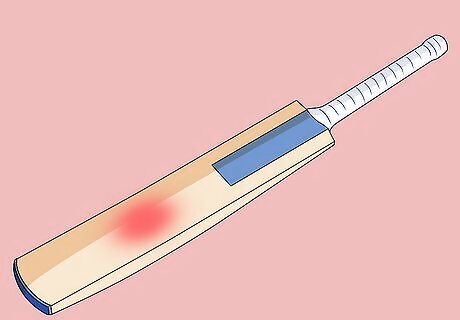
Look for the “sweet spot.” If you already have experience playing cricket, think of where along the bat you tend to hit the ball the most. As you inspect each new bat, examine its blade, because shapes vary from one bat to the next. Locate each blade's “sweet spot,” which is wherever it is thickest. Choose a bat whose sweet spot is located wherever you strike the ball most often. This will translate to more durability and power during play. If you're a beginner, favor bats that are thickest in the middle for the best coverage. As you develop as a player, take note of exactly where along the bat you tend to favor when hitting the ball for future reference.
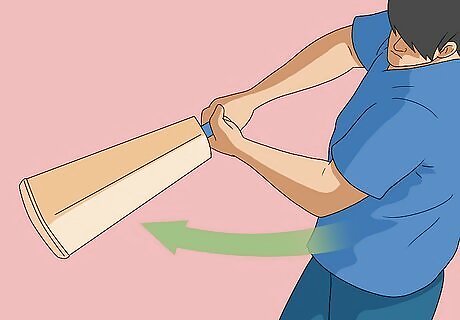
Feel the weight. Take the bat in your hands and simulate gameplay to judge how the bat's weight feels in motion. Take test swings and practice pick-ups to make sure it responds quickly when you need to react fast. Hold the bat out on arm's length with your weaker hand to see if it tires you too soon. Also keep in mind that: The location of the blade's “sweet spot” will affect how the weight feels in your hand. Lower sweet spots will make the bat feel more bottom-heavy, while higher sweet spots will do the opposite. This is why it's so important to visit a brick-and-mortar store, since an online description of a bat's weight alone won't inform you how a bat will actually feel in your hand.

Go with “pre-treated” bats if you're a beginner. Don't expect all bats to be ready for immediate use. Know that bats can crack in play without prior treatment or “knocking in.” If you are unfamiliar with how to do this, limit your search to bats that have already received this treatment and are ready for immediate play. “Knocking in” refers to a process of lightly striking the wood with a bat mallet or leather ball. This strengthens the wood by compressing it. However, be aware that too much “knocking in” can damage the bat. If you're unsure of how to safely do it, go with a pre-treated bat as well.














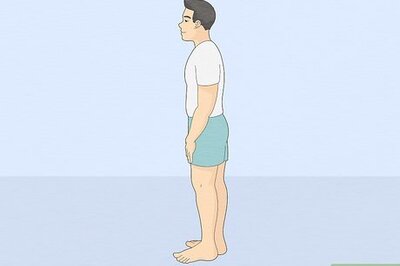



Comments
0 comment